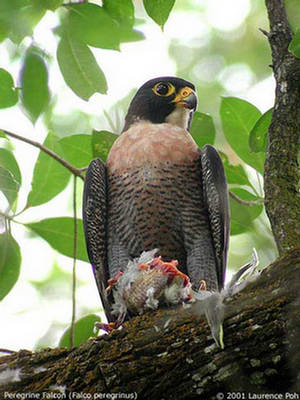Status: Endangered throughout Canada. Populations in southern Canada were established with captive-bred young and remain small. Twenty years ago there were no breeding pairs in southern Alberta. Now there are 30 pairs across the province.
Appearance: Slim birds with a small head and long, thin, pointed wings. Similar in size to crows.
Breeding: In Alberta, they nest on ledges on steep cliff faces or high office towers. A male will fly complex courtship flights for his mate. In mid-May females usually lay four eggs. Both adults help incubate the eggs which hatch in mid-June. The young birds begin to fly 35-45 days later. Due to their inexperience flying and hunting, over 60 per cent will die before the next spring.
Risk factors: Agricultural and industrial use of pesticides has caused a worldwide decline of peregrine falcons. Pesticide use is closely regulated in Canada and the U.S. but not in Latin America where peregrines winter.
Pesticide residues remain in the environment for many years. They're picked up by a variety of animals, then passed on up the food chain to birds of prey. The residues collect in the birds' fat and eventually interfere with reproduction, causing thin eggshells and dead embryos.
The Canadian Wildlife Service also has a breeding facility near Wainwright. The eggs or young from these captive birds are fostered with wild falcons to supplement natural reproduction.
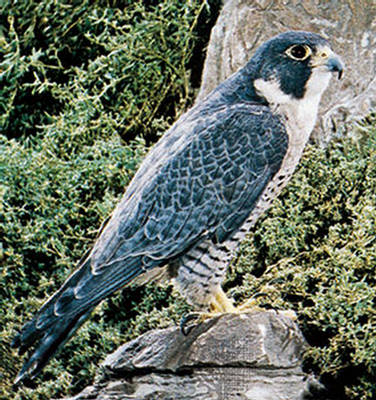
Lifespan: Up to 13 years. A falcon named Arrow nested and bred in Edmonton's AGT Tower for 11 years.
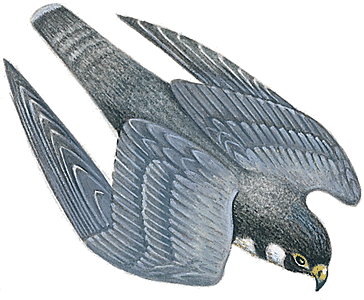
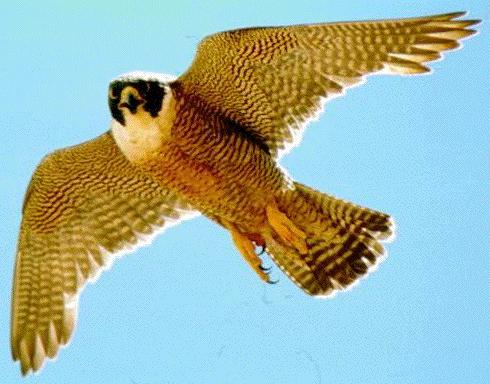
Food: Peregrines can reach speeds close to 320 km-h in a downward dive. They use their speed and agility to catch birds in mid-air. Their prey range in size from sparrows to large waterfowl such as ducks.
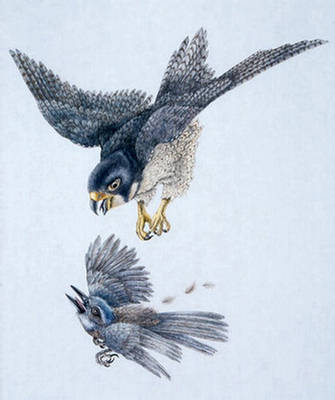
Management and Outlook: Population recovery in Alberta is slow in spite of intensive management programs and reduced pollutant residues in falcons and their prey.
Each year since 1992, wildlife agencies in Alberta have released 45 captive-bred falcons. They use a technique called hacking, where 30-day-old birds are placed in hack boxes on cliffs or tall buildings. The box protects the young birds from the weather and predators. An attendant provides food through a tube until the birds instinctively master flying and hunting several weeks later.

Programs like these should maintain the current breeding population and may increase it to a self-sustaining level in the future.
It is illegal to kill or disturb peregrine falcons or their nesting areas in Canada and the U.S.
